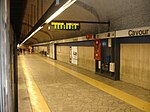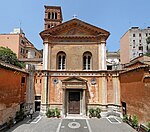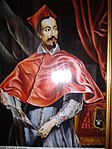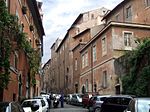Via Cavour, Rome
Italy road stubsLazio geography stubsStreets in Rome R. I Monti

Via Cavour is a street in the Castro Pretorio and Monti rioni of Rome, named after Camillo Cavour. It is served by the Rome Metro stations Cavour and Termini. The facade of the original permanent Roma Termini railway station reached this street, though it is now 200 metres farther back towards the Esquiline. It runs from the Piazza del Cinquecento north of Termini Station, near the Baths of Diocletian, south-westward past the basilicas of Santa Maria Maggiore and San Pietro in Vincoli, and concludes at the Roman Forum, a total distance of 1.3 kilometres (0.81 mi). The street houses a large number of hotels and restaurants.
Excerpt from the Wikipedia article Via Cavour, Rome (License: CC BY-SA 3.0, Authors, Images).Via Cavour, Rome
Via Cavour, Rome Municipio Roma I
Geographical coordinates (GPS) Address Phone number Website Nearby Places Show on map
Geographical coordinates (GPS)
| Latitude | Longitude |
|---|---|
| N 41.896388888889 ° | E 12.495 ° |
Address
Bandiera SaS -Chitarre percussioni e amplificatori
Via Cavour 145
00184 Rome, Municipio Roma I
Lazio, Italy
Open on Google Maps










